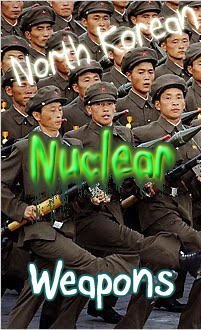1945 -- At the end of World War II, the Korean Peninsula is caught up in a violent Cold war over Communism. The fighting continues for years.
1953 -- A ceasefire is signed on the peninsula, ending the war, bringing a tense state of peace, and dividing the area into the independent nations of North Korea and South Korea.
Shortly afterward, South Korea leaves it's northern counterpart lagging behind in terms of economic development, despite North Korea's advantage at the end of the war.
1993 -- North Korea withdraws from the national Nuclear Non-Proliferation Treaty, a signed agreement to cease the testing and production of nuclear weapons. As a result, great tension is created within the UN, and the United States sends troops over seas in order to monitor the country.
Recently -- Reunification of North Korea and South Korea has been discussed, but never quite considered. This is mainly due to North Korea's insistent system of Communism, it's continued cultural cut-off, and it's non-cooperation and secrecy in the area of nuclear activity.





